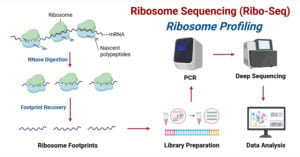Fluorescent in situ sequencing (FISSEQ): Principle, Steps, Uses
Fluorescent in situ sequencing (FISSEQ) is a method that is used to precisely locate and sequence multiple RNA molecules within intact cells and tissues. This method sequences RNA directly inside … Read more










